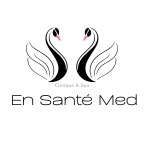DERMAL FILLER
Dermal filler injections are a popular way to target wrinkles, fine lines and sagging skin without going under the knife. These substances are injected just beneath the surface of the skin, restoring lost volume and leaving you with a fresher, more youthful look.
The majority of women however who use dermal fillers get it in fairly small quantities and are not necessarily interested in sculpting their jawlines as much as they are interested in restoring gradual changes that have occurred over time to affect how they see themselves or more likely to correct some form of imbalance in their appearance.
Most humans are not symmetric and sometimes you don’t want symmetry but balance. So symmetry is how even things look when looking at one half of something compared to the other half. Balance on the other hand makes use of symmetry and asymmetry to create harmony which then makes things more pleasing to the human eye. In our offices our aim is to restore, enhance or create this harmony for women
The procedure itself is quick and easy, with little time needed for recovery. Depending on your particular filler type, results can last anywhere from a few months up to several years! Different fillers are available depending on your skin’s needs and goals, but it’s important to know that there are some risks associated with the procedure.
Choosing an experienced healthcare provider minimizes these risks, but health insurance usually does not cover elective dermal fillers.
What are examples of dermal fillers
The most popular type of dermal fillers is hyaluronic acid. It comes in different consistencies
Hyaluronic acid or HA is made of glucose molecules which are, glucuronic acid N-acetylglucosamine that are bonded together.
Amongst the most widely used hyaluronic acid dermal fillers are:
RHA
Restylane
Belotero
Revanesse
Juvederm
Which dermal filler is best for you?
There are so many different types of filler with varying consistencies, use and indications. The best way to find out which will be best for your particular need is to have a discussion with your doctor and aesthetics team. It may be best in some cases to use one type of filler for a specific area and a different type for other areas. We recommend fillers based on the area, desired effect and safety profile.
What are the most common areas corrected with dermal fillers or Hyaluronic acid?
Acne scars
Wrinkles
Sunken cheeks
Jawline
Hollow temples
Under eye
Hands
Feet
What are the risks of associated with dermal filler injections
Generally risk associated with hyaluronic acid filler injections are mild and temporary such as bruising, swelling, infection and redness however, on rare occasions deleterious complications like blood blood vessels, skin necrosis, and vision loss. Vascular injuries resulting in blockage are treated promptly with enzymes to dissolve or break down the bonds between the dermal filler structures.
Our aim is to help women achieve their goals in a minimally invasive manner with natural results.
What does a consultation for dermal fillers entail?
During your consultation, you will discuss your concerns and areas you will like to improve with the doctor. We will review your medical history and review the process. Your doctor will discuss with you the best course of action for you. Generally good candidates for dermal filler injection are in overall good health, and lack any autoimmune disorders.
How do I prepare for dermal filler or hyaluronic acid procedure?
We recommend avoiding NSAIDs such as Ibuprofen and Aspirin to decrease risk of bruising. Fish oil and certain supplements may also increase bruising in which case we recommend avoiding for 24 to 48 hours before injection. Avoid waxing, tweezing and depilatory or hair removal creams 24 hours before your appointment. Come to the appointment with a freshly cleaned face and no makeup.
What happens during the appointment for dermal filler?
The doctor will examine and clean your face. Numbing medication may or may not be needed depending on the area. Generally lips are sensitive and require numbing medication. A clean maker may be used to identify placement of the needle. Nerve block with lidocaine may or may not be needed. The injection will be performed. Ice and or Arnica cream may be applied.
What is the after care after dermal filler injection?
Keep your face clean and stay hydrated. Ice may be applied to reduce bruising and swelling. Take tylenol if needed to reduce discomfort. Avoid intense exercise and sweating for the first 24 hours afterwards. Do not pick or scratch your area for 3 days. Wearing sunscreen with SPF of 30 or greater to limit sun exposure is always recommended.
When will I see results after dermal filler injection?
Typically some improvement can be seen immediately after however, it takes 4-6 weeks to begin to see the full effect. Temporary swelling is common immediately and a few days after injection. This settles down by the end of the second week. Bruising if any will resolve in 1- 2 weeks. Some areas may need repeat treatments 2-3 times for optimal results.
How long will the benefits last?
The improvement or result may last 6 – 12 months. For some people it may last 18 -24 months.
Considering treatment with dermal fillers?
Start here by requesting a consultation.
